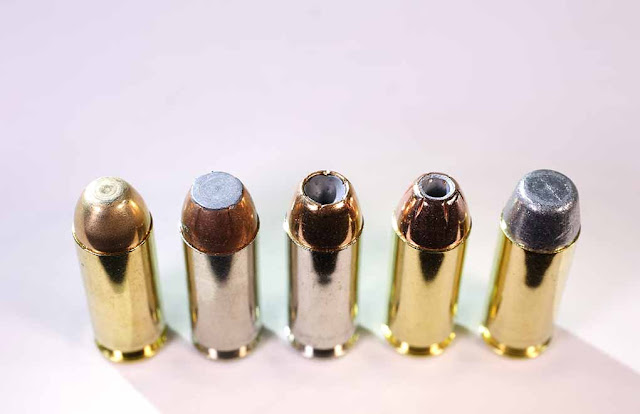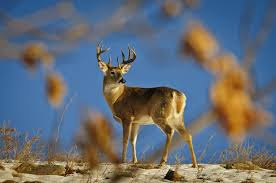Interesting Facts About Ammunition Names and Terms Explained
Have you ever thought about how the naming for all the different types of ammunition works? So you've got two different ways that it works for handgun and rifle ammunition and something different going on with shotguns.
Handguns & Rifle Ammunition
For handguns and rifles, you've got ammunition that's measured in inches and ammunition that's measured in millimeters. So for the metric, you'll have things like 9mm, 10mm, or 7.62mm and for inches, you'll have things measured and like .380 or .45 or .22 and if you remember a little bit about math, you'll remember things like .380 and .38 being the same size so in theory .380 and .38 are the same size bullet.
Shotgun Ammunition
Now, shotgun ammunition is measured in gauge and this is where it gets kind of strange. Because as the number gets lower the actual size of the bore gets bigger that's because the gauge represents splitting up a one-ounce piece of lead by X number of pieces. We'll say 12 for example with 12 gauge, and every little 12th piece of that is made into a perfect sphere and then the circumference of that sphere is the bore of the shotgun.
Ammo With Manufacturer Name
Now the names kind of vary a lot of them are after manufacturers, a lot of them is the name of a person that was involved with designing it, a lot of these names are often abbreviated into letters that you will see after it, such as .45 ACP which stands for Automatic Colt Pistol. You've got other things like .22 long rifle, 10mm Auto, .32 Winchester Centerfire, 40 Smith & Wesson, .223 Remington, .50Action Express, .45 Glock Automatic Pistol.
So when you see a manufacturer named after the size of the round on a firearm it doesn't mean that the firearm is made by that company, such as a .40 Smith & Wesson may not necessarily be a Smith & Wesson.
There are a bunch of different companies that make .40 Smith & Wesson firearms.
But then you get the ones that have a number followed by a dash and another number such as .32-20, .30-30 or .45-70 Government, which is the only government I trust these have to do with the original black-powder loading how many grains of black powder there were in there such as .32-20 having 20 grains, .30-30 having 30 grains, .45-70 having 70 grains but then you've also got 30.06 which is a number and a dash and another number followed by it and that doesn't mean that there's like six grains of powder. It just means that it was originally adopted in 1906. So, yeah, that gets kind of complicated then we get the boring ones to just have a number by another number like 7.62x39 or 7.62x54R.
I mean, that's pretty much just the dimensions of their round. They couldn't come up with any cool names so they just put the numbers there all right, we got all these numbers down. We figured out there are names after the numbers.
Special Ammo
Let's go ahead and get these out of the way okay, we'll start with something special. That just means that it's a special round Just remember .38. Special just means that it's a lighter load now. There may not be like a heavier equivalent version of it around anymore.
Magnum Ammo
Magnum, What does that mean? Magnum is a word that comes from wine bottles. That basically you would have a Magnum bottle that would be bigger than the regular bottles. So Magnum is a bigger round.
.44 Magnum is a larger version of the .44 Special. It's basically a little bit longer cartridge with the same bullet. It's got some more powder in it. It goes bang harder and it's so powerful.
+P Ammo
It'll blow your head clean off +P, that means it's got extra pew pews in it pew pew pew pew pew. It just means that it's a load with more powder in it that goes bang harder.
So what's the difference between +P and Magnum? Well, generally +P will end up being the same size cartridge such as 9mm +P is the exact same looking cartridge as a regular 9mm so make sure that if you're getting +P ammo, that your firearm is actually rated to be able to accept the +P. A lot of older firearms won't be able to take it.
Rimmed cartridges
Basically rimmed cartridges have this rim on the back of it which other cartridges will not have. They just have a little groove in there that it uses to extract. These basically help it seat in their centerfire versus rimfire centerfire. It means that there is a primer in the center that it strikes, centerfire.
Rimfire means that it hits it on the rim and that's where the primer is and that's what makes it go boom. There aren't a whole lot of really common rimfire rounds anymore.
.22 long-rifle is kind of the king of the rimfires but there are a few others hanging around out there.
Ammo Name By we're ready to go There's still more?! okay so supposed to go over sizes here a little bit okay so 45 ACP has a bullet size of 0.451 alright, that's basically 45. Or 45 long colts have 0.452, pretty much 45. 45-70 is 0.458, once again pretty much 45 and 380 ACP has a bullet size 0.355. Wait, what? 380 has a bullet that's .355 okay but the neck size is .373 and that's close to 380, so 380 is naming itself after the neck of the bullet. But then 380 is also known as 9mm Short and 9mm is 0.355 so in its metric name, it's by the actual bullet size. I mean 9mm parabellum is .355, so that's pretty close. 357 Magnum is 0.357, okay, that's good and 38 special is 0.357, wait... .357 on the 38 special? it's naming itself after its neck of .379? What?
Conclusion:
So, We've got the sizes explained, we've got the names after the sizes explained, we've got the little words to go after the names explained. Okay, we've got to be finished up with it now.
Basically, some of these names themselves after the bullet, and some of them named themselves after the neck and there's like no consistency or correlation.



Comments
Post a Comment